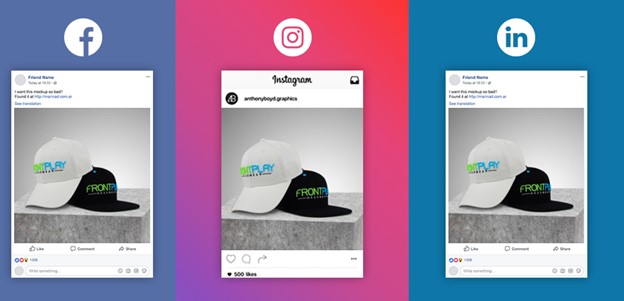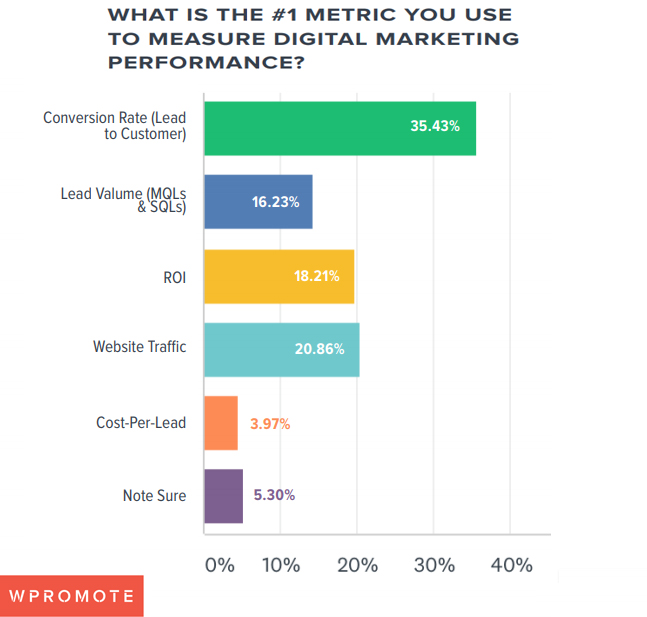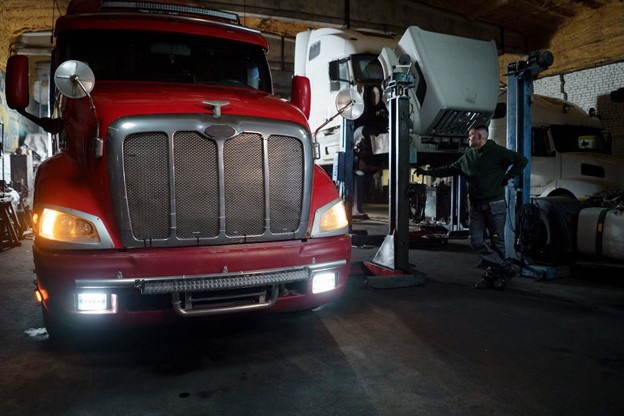13 min to read

In today's digital world, having a strong presence on social media is essential for success. Whether you are promoting your brand, selling products or services, or just trying to get your message out there, mastering the art of fleet media can be key to achieving your goals. But what exactly is fleet media? It refers to using multiple platforms such as Twitter, Instagram, and YouTube, simultaneously in order to maximize the reach of an organization’s message.
CodeDesign is the leading digital marketing agency in Lisbon Portugal.

This article will provide tips and strategies on effectively using this form of marketing to boost customer engagement and drive more traffic toward your business.
In digital advertising, frequency is a measure of how often your audience sees your ad within a specific period. Understanding its importance is crucial for a couple of reasons. Firstly, frequency helps manage advertising costs while maximizing reach. If a user sees your ad too often, it leads to ad fatigue, making your campaign less effective. On the other hand, if the frequency is too low, there's a chance that the audience may not recall your message, leading to missed opportunities. For example, you're running simultaneous Twitter, Instagram, and YouTube campaigns. If a customer sees your ad five times a day on Twitter, three times on Instagram, and twice on YouTube, they've encountered your ad a total of ten times in one day. That's quite high and might cause ad fatigue. Balancing your frequency across these platforms could mean adjusting so that your audience sees your ad a total of five times a day, divided across the three platforms.
Secondly, frequency helps in building brand recognition. When an audience member sees your ad multiple times, they're more likely to remember your brand. But remember, this needs to be balanced to avoid overexposure. Using our example, if a potential customer sees your ad on Twitter in the morning, later in the day while watching a YouTube video, and finally while scrolling Instagram at night, it helps create multiple touchpoints. This could increase their likelihood of recognizing your brand and eventually purchasing.
So, frequency plays a significant role in your digital campaigns. It's all about finding the sweet spot – not too much, not too little – to ensure your audience gets just the right amount of exposure to your ads.
Read this complete guide on digital marketing funnel and then choose the right digital marketing channel for your business.
Defining Your Fleet Media Objectives
When it comes to using fleet media, the most important step is to define your objectives. Is your goal to increase brand awareness? Or do you want to drive more traffic toward a specific product or service? Knowing what you want to achieve will help inform which platforms you should use and how to craft your messages for each platform. Start by creating a list of what you want to accomplish and then begin mapping out a plan for how you will go about achieving each goal. If you need specific data to measure the success of your campaign, you can also set up tracking tools such as Google Analytics. The more specific you are about the metrics you want to track, the better, so make sure you are tracking your performance.
Different social media platforms come with their unique metrics and key performance indicators (KPIs). However, to establish coherent campaign goals across multiple platforms such as Twitter, Instagram, and YouTube, it's crucial to keep your overarching business objectives in mind. These objectives can range from increasing brand awareness, driving website traffic, and boosting user engagement, to ultimately enhancing sales or conversions. The focus should be less about matching identical metrics across platforms, and more on aligning each platform's unique capabilities with your broader goals.
- Increasing Brand Awareness: Platforms like Twitter, Instagram, and YouTube all offer metrics for reach and impressions. Though these metrics might be measured slightly differently across each platform, they can all contribute to assessing your overall brand exposure.
- Driving Website Traffic: You can track link clicks on Twitter, Instagram (through bio link or swipe-up feature in stories for eligible accounts), and YouTube (via clickable links in video descriptions or cards). These metrics, while platform-specific, all point to the same goal of driving traffic to your website.
- Boosting User Engagement: Metrics for engagement—likes, shares, comments on Twitter and Instagram, or likes, comments, and shares on YouTube—can be tracked to see how users interact with your content across platforms.
- Enhancing Sales/Conversions: If your end goal is conversions or sales, you can track conversions from ad clicks on Twitter, Instagram Shopping, or product links from YouTube videos.
Remember, although the metrics may vary, the key is to define your goals based on what you want to achieve as a business, and then use the most relevant metrics available on each platform to measure your progress toward those goals. It can also be helpful to use an analytics dashboard that consolidates data from all platforms, offering a holistic view of your performance across channels.
Instant Communication via Dispatch Radio
Dispatch radio is an effective method for promptly communicating with your drivers and ensuring they are updated on any fleet changes. You can effortlessly send messages from your office or use a basic handheld device to keep everyone informed. This helps ensure that your drivers are able to quickly respond to customer requests and orders, while also providing them with all the information they need to be successful in their job. Namely, learning more about 2-way push talk radios can help you get familiar with the technology and ensure that your fleet is operating efficiently. Many companies have gained significant benefits by using dispatch radio systems in their operations. Implementing one lets you easily track vehicles’ activities in real-time and learn about their locations on a map.
Designing Eye-Catching Fleet Graphics
To ensure that your fleet media campaigns have a strong impact, it's essential to incorporate visually appealing graphics that catch people's attention. Doing so can establish a powerful link between your brand and its customer base. Output Language Code: EN-GB Graphic design requires skill and experience. If you don’t have the resources to employ a professional designer or agency, many great online tools like Canva can help you create stunning visuals.
Use imagery that accurately reflects your brand message and resonates with your target audience. Perhaps most importantly, remember to keep it consistent so that all of your graphics look like they belong together. Regularly delivering content that is pleasing to the eye will help make your fleet media campaigns effective. Here are a few strategies that might help:
- Define your Core Message Clearly: This is your central idea. It's what you want your audience to remember, even if all other campaign elements are stripped away. For instance, Nike's 'Just Do It' ethos is carried consistently across all formats, whether a short tweet, a YouTube video, or a carousel ad on Instagram.
- Understand the Platform's Unique Aspects: Each platform has strengths and weaknesses. Twitter is great for short, impactful statements. Instagram excels at visual storytelling, while YouTube is perfect for longer, narrative-driven content. Adapt your message to fit these strengths without altering its core meaning.
- Make Use of Platform-Specific Features: Instagram Stories, YouTube video descriptions, or Twitter threads can all be used creatively to communicate your message in different ways. Instagram Stories, for instance, can be used to create a sequential narrative that communicates your message across multiple slides.
- Keep a Consistent Brand Voice: This is crucial. Your brand's voice is its personality; it's how your message is delivered. It should be consistent across all platforms to ensure the audience recognizes it as your brand, regardless of format or medium.
- Test and Adjust: Monitor the performance closely once you've adapted your campaign to different formats. If a particular format isn't working, don't be afraid to make changes. A/B testing is a great way to determine what works and what doesn't.
By considering these strategies, you can effectively adapt your campaign to various formats, ensuring your core message and logic remain intact.
Read this guide on E-commerce supply chain and voice search optimization.
Crafting Compelling Messages

To make your fleet media campaigns effective, shift your focus to messaging after creating visuals. Your messages should be creative, yet clear and concise to attract people. Use a conversational tone and align your language with your brand’s voice. Also, include a direct request for action in every message to encourage individuals to complete the intended task. Your messages need to have a unified tone across all channels and be pertinent to the preferences of your intended viewers.
On the other hand, avoid overly promotional content and using too many hashtags as they can feel intrusive and off-putting. You want to be aware of the various regulations and rules on each social media platform so that you don't violate any terms of service.
Analyzing Performance
Your fleet media campaigns will only be successful if you can measure and analyze the performance of your efforts. Set up regular reports to track key performance indicators such as website visits, shares, likes, or comments to understand how well your messages resonate with customers. This data is invaluable for improving future campaigns and strategically deciding which platforms to focus on and which tactics to pursue. Many social media platforms provide in-depth analytics tools that you can take advantage of to track your progress. Being able to quickly and accurately assess the performance of your campaigns will help you refine your strategy and boost engagement.

Analyzing campaigns with different sources involves understanding and applying attribution models, which are rules or set of rules that determine how credit for conversions is assigned to different marketing touchpoints.
1. Single-Touch Attribution Models:
- First-Touch Model: This model gives 100% of the credit to the customer’s first touchpoint with your brand. If a customer found your business through a Google search and later made a purchase, the Google search gets the credit.
- Last-Touch Model: In contrast to the first-touch model, the last-touch model gives 100% of the credit to the last touchpoint the customer had before making a purchase or conversion.
2. Multi-Touch Attribution Models:
- Linear Model: This model distributes the credit equally among all touchpoints. If a customer had five interactions with your brand before making a purchase, each interaction would get 20% of the credit.
- Time-Decay Model: As the name suggests, this model gives more credit to the touchpoints that occurred closer to the time of conversion. If a customer interacted with your brand on Twitter, then an email newsletter, and then a Google ad before making a purchase, the Google ad would get the most credit.
- U-Shaped Model: This model gives 40% of the credit to the first and last interactions and the remaining 20% is distributed evenly among the other touchpoints.
- W-Shaped Model: This model gives 30% of the credit each to the first interaction, the interaction that led to lead creation, and the last interaction before conversion. The remaining 10% is distributed among the other touchpoints.
3. Data-Driven Attribution Models: These models use machine learning and your account's conversion data to determine the credit for each touchpoint. The model can flex and adapt as it learns which touchpoints are most valuable for your business.
You can use Google Analytics or other analytics tools to analyze campaigns to apply these models and determine which channels are most effective for your business. By testing and comparing different models, you can develop a nuanced understanding of how your marketing strategy is driving conversions.
Remember, the best attribution model depends on your unique business and marketing strategy. What's crucial is understanding the journey your customers take and how different touchpoints contribute to their decisions to convert.
Tracking and Measuring Success
Once you have implemented your fleet media campaigns, tracking and measuring their success is important. Track your engagement levels on each platform, website visits, or other goals that will indicate success. It's important to keep track of key metrics like new followers and mentions to make the most of your campaigns. Namely, you can adjust your tactics quickly by setting up alerts for these metrics. This will help you optimize your fleet media initiatives and ensure you get the best results possible.
For example, if you see that your campaigns are getting a lot of shares on Instagram but not on Twitter, you can adjust your content strategy accordingly to increase engagement. Seeing an increase in engagement can also help you better understand the wants and needs of your customers.
Ensuring Compliance and Safety
Ensuring compliance with safety regulations and guidelines is important when running fleet media campaigns. Companies transporting goods should ensure drivers are familiar with the laws in their region and abide by the rules for safe driving. To promote safe driving, businesses can use GPS tracking systems or dashcams to monitor their drivers. Additionally, the fleet must maintain vehicles to regularly reduce the risk of accidents. To enhance safety promotion in fleet media, it's advisable to incorporate visual aids like videos or pictures of drivers and their vehicles operating safely. Such visuals will remind of safe practices and encourage positive behavior..
Overall, fleet media can be an effective way to reach customers and increase engagement with your brand. However, it is important to ensure that you comply with safety regulations and guidelines while creating compelling visuals and messages for each platform used in the campaigns. By tracking performance metrics such as website visits or shares, you can refine your strategy over time and maximize the success of your initiatives. With a little bit of effort, you can use Fleet Media campaigns to create powerful connections between people and brands.
Streamline your digital marketing.
Interested in propelling your business to new heights with performance marketing? Contact Codedesign! We are a team of digital navigators, dedicated to guiding businesses through the labyrinth of the digital landscape. Using data-driven strategies, we specialize in transforming your vision into quantifiable results. Our team of PPC experts and digital strategists are adept at leveraging advanced tools to create campaigns that hit the mark. Whether you're a startup or a multinational corporation, Codedesign can accelerate your growth and enhance your digital footprint. Don't stay stuck in the digital shadows. Step into the spotlight with Codedesign. Let's start your digital journey together.
FAQS - Frequently Asked Questions
What is fleet media, and why is it important for digital marketing?
Fleet media refers to advertising and promotional activities that use a company's fleet of vehicles as mobile billboards. This includes branding on cars, trucks, vans, and buses that move or are parked in strategic locations. It is important for digital marketing because it extends the reach of online campaigns into the physical world, creating a seamless omnichannel marketing strategy. Fleet media offers high visibility in various locations, contributing to brand awareness and recall. It's a cost-effective way to ensure consistent messaging across different touchpoints, connecting with audiences offline and driving them to online platforms for deeper engagement.
How can one balance ad frequency across multiple platforms to avoid ad fatigue?
Balancing ad frequency across multiple platforms involves careful planning and monitoring of campaign metrics to ensure messages are impactful without overwhelming the audience. Employing a cross-platform media planning tool can help marketers distribute their advertising efforts strategically, taking into account the unique characteristics and user behaviors of each platform. Implementing frequency capping, diversifying ad creatives, and tailoring messages to suit the context of each platform are crucial steps. Additionally, leveraging insights from data analytics to understand audience engagement and fatigue thresholds allows for real-time adjustments to campaign strategies.
What steps should be taken to define fleet media objectives effectively?
Defining fleet media objectives effectively requires a clear understanding of the broader marketing goals and how fleet media can support these aims. Start by identifying the target audience and the geographical reach of the fleet. Set specific, measurable, achievable, relevant, and time-bound (SMART) objectives, such as increasing brand awareness in key markets, driving more traffic to your website, or generating leads. Consider the integration of fleet media with other marketing channels for a cohesive strategy. Finally, establish key performance indicators (KPIs) to measure the success of the fleet media campaign in achieving these objectives.
How can dispatch radio improve communication in fleet operations?
Dispatch radio significantly enhances communication in fleet operations by providing real-time, two-way communication between drivers and dispatchers. This allows for efficient routing, immediate updates on traffic conditions, and swift response to emergencies or changes in schedules. Improved communication enhances operational efficiency, safety, and customer satisfaction by ensuring that drivers can be rerouted quickly in response to real-time information. Furthermore, dispatch radio can contribute to better fleet management by facilitating the coordination of deliveries and pickups, reducing idle time, and optimizing fuel use.
What are some key strategies for designing eye-catching fleet graphics?
Designing eye-catching fleet graphics involves several key strategies: Use bold colors and contrasts to make the design stand out, even from a distance. Keep the message simple and the design uncluttered for easy comprehension by viewers who only have a few seconds to take in the information. Incorporate your brand's logo and colors consistently to enhance brand recognition. Tailor the design to fit the vehicle type and shape, ensuring maximum visibility and impact. Finally, consider the use of high-quality images and creative visuals that tell a story or evoke emotions, making your fleet memorable to the audience.
How can a brand ensure its message remains consistent across different platforms?
Ensuring message consistency across different platforms requires a cohesive brand strategy and clear communication guidelines. Develop a comprehensive brand style guide that covers logo usage, color schemes, typography, tone of voice, and imagery. This guide should be accessible to all team members and external partners involved in content creation. Utilize centralized management tools for content and campaigns to maintain oversight and coherence. Regularly review and update all platforms to ensure they align with the latest brand guidelines. Training and internal communication are also vital to ensure everyone understands the brand's core messages and values.
What tools and techniques are recommended for analyzing the performance of fleet media campaigns?
Analyzing the performance of fleet media campaigns can be achieved through a combination of GPS tracking, QR codes, unique URLs, and dedicated landing pages. GPS tracking helps monitor the vehicles' routes and the geographical reach of the campaign. QR codes and unique URLs printed on the fleet graphics can track engagement and conversions directly attributed to the fleet media. Surveying brand awareness and recall in areas covered by the fleet can also provide insights into campaign effectiveness. Utilizing these tools and techniques allows for a comprehensive understanding of the campaign's impact and areas for improvement.
How does one track and measure the success of a fleet media campaign?
Tracking and measuring the success of a fleet media campaign involves setting clear KPIs based on the campaign's objectives. These could include increases in website traffic, higher engagement rates on social media, more inquiries or leads, and enhanced brand recognition in targeted areas. Utilizing tracking technologies such as GPS to analyze the coverage and frequency of the fleet's exposure, alongside digital analytics tools to measure online engagement and conversions resulting from the campaign, are effective strategies. Surveys and feedback forms can also gauge brand awareness and perception changes among the target audience.
What are some common challenges faced when implementing fleet media strategies?
Common challenges in implementing fleet media strategies include logistical issues related to the design, production, and application of graphics on a diverse fleet. Ensuring consistent brand representation across different vehicle types and sizes requires meticulous planning. Another challenge is measuring the direct impact of fleet media on marketing objectives, as attribution can be complex without integrated digital tracking mechanisms. Additionally, maintaining the quality of the fleet graphics over time to prevent brand dilution through worn-out or damaged signage is crucial.
How can a company ensure compliance and safety when utilizing fleet media?
Ensuring compliance and safety when utilizing fleet media involves adhering to legal requirements and industry standards for vehicle signage. This includes checking local regulations on the size, placement, and content of vehicle graphics to avoid obstructing drivers' views or distracting other road users. Companies should use high-quality materials to prevent wear and tear that could lead to safety hazards. Regular inspections and maintenance of the fleet graphics are essential to keep them in good condition and ensure they accurately represent the brand. Additionally, involving legal and safety experts during the design and implementation phases can help identify and mitigate potential issues.

About Bruno GavinoBruno Gavino is the CEO and partner of Codedesign, a digital marketing agency with a strong international presence. Based in Lisbon, Portugal, with offices in Boston, Singapore, and Manchester (UK) Codedesign has been recognized as one of the top interactive agencies and eCommerce agencies. Awarded Top B2B Company in Europe and Top B2C company in retail, Codedesign aims to foster personal relationships with clients and create a positive work environment for its team. He emphasizes the need for digital agencies to focus on data optimization and performance to meet the increasingly results-driven demands of clients. His experience in digital marketing, combined with a unique background that includes engineering and data, contributes to his effective and multifaceted leadership style. |

About CodedesignCodedesign is a digital marketing agency with a strong multicultural and international presence, offering expert services in digital marketing. Our digital agency in Lisbon, Boston, and Manchester enables us to provide market-ready strategies that suit a wide range of clients across the globe (both B2B and B2C). We specialize in creating impactful online experiences, focusing on making your digital presence strong and efficient. Our approach is straightforward and effective, ensuring that every client receives a personalized service that truly meets their needs. Our digital agency is committed to using the latest data and technology to help your business stand out. Whether you're looking to increase your online visibility, connect better with your audience, get more leads, or grow your online sales. For more information, read our Digital Strategy Blog or to start your journey with us, please feel free to contact us. |
CodeDesign is leading:
- Digital Agency
- Digital Marketing Agency
- Digital Ecommerce Agency
- Amazon Marketing Agency




Add comment ×